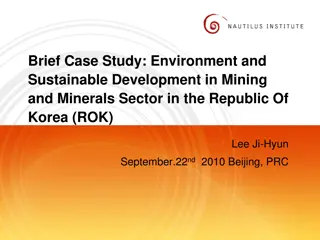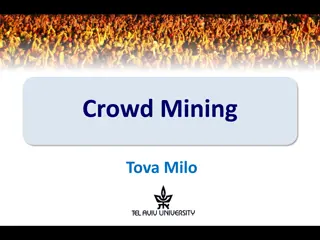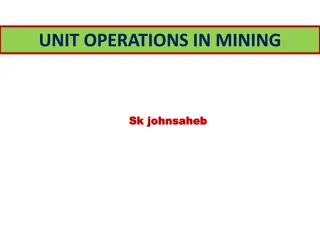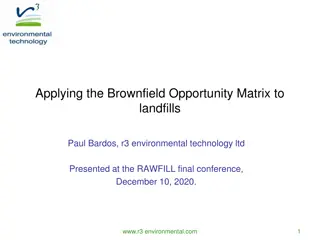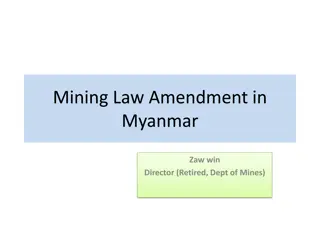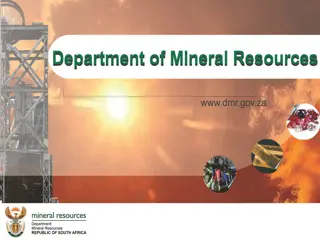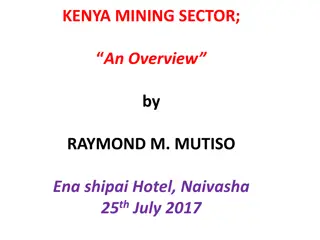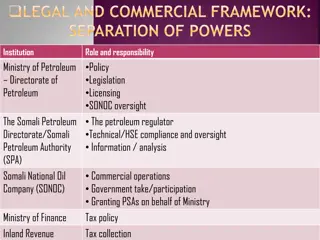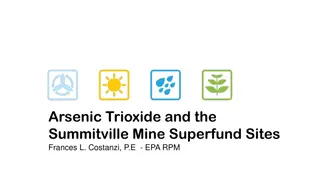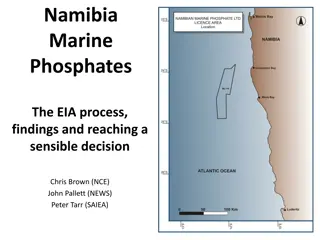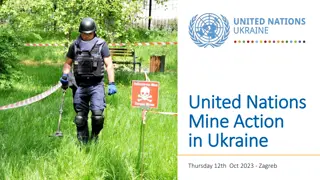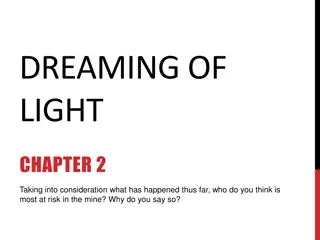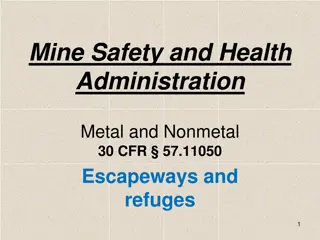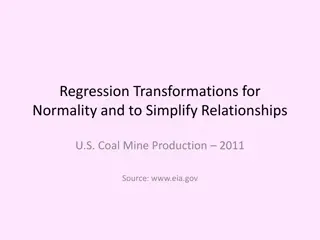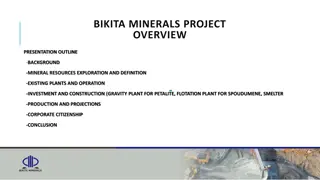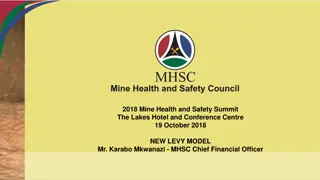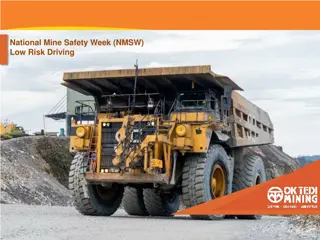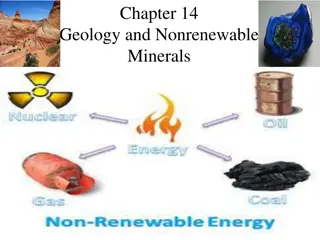Environmental Impact of Cobalt Mining in Blackbird Mine Area
Cobalt mining activities in the Blackbird Mine area have had a significant impact on the local ecosystem, particularly on salmon populations in Panther Creek. The mining operations led to increased acidity in waterways, resulting in Acid Mine Drainage and the mobilization of toxic metals like copper. The forthcoming Idaho Cobalt Project aims to address these environmental concerns through proper waste management and water treatment practices.
Download Presentation

Please find below an Image/Link to download the presentation.
The content on the website is provided AS IS for your information and personal use only. It may not be sold, licensed, or shared on other websites without obtaining consent from the author. Download presentation by click this link. If you encounter any issues during the download, it is possible that the publisher has removed the file from their server.
E N D
Presentation Transcript
Li-ion batteries: primary ingredients are Cobalt and Lithium Cobalt: mined from metallic minerals, often found with other metals like copper used in many other applications (not just batteries), like stainless steel Most is mined in Africa.
Blackbird Mine Cobalt mine (using underground and pit mines) in a mountainous, forested area in Idaho. Streams from this area feed into the Salmon River and were historically spawning grounds for salmon. Waste rock filled pits, made piles, and was used to cover roads. Tailings were also piled on site with no concern about water flow (site drainage). Photos from NOAA (1994 and 1996), from http://www.darrp.noaa.gov/northwest/black/photo.ht ml
Before 1945, the number of salmon redds in Panther Creek were about 1000. What happened to the amount of salmon breeding (as evidenced by the number of redds) in Panther Creek during the period of mining in Blackbird Mine? (Mining activity in Blackbird Mine peaked in the 1960s; the mine closed in 1982.)
What do you see on this map that suggests that the mining influenced water pH? Keep in mind that pH is a measure of acidity. Numbers less than 7 are acidic, with smaller numbers being more acidic.
Increased acidity in waters draining mines (where sulfide minerals are present) is called Acid Mine Drainage. Based on the graph, what is the link between pH and the amount of dissolved metals (as evidenced by copper)?
What we learned from Blackbird Mine Acid Mine Drainage mobilizes metals. Many metals (in high concentrations) are toxic to organisms. High concentrations of copper is toxic to fish, but also to many insects and microorganisms. Changes to the Panther Creek ecosystem were directly linked to cobalt mining at Blackbird Mine.
A new cobalt mine (Idaho Cobalt Project) will be opening in the Blackbird Mine area. Water flowing through waste rock and tailings must not enter area streams. Places where waste rock and tailings are stored will be lined. An on-site water treatment plant neutralizes acidic water. Water quality at spots around the site is continually monitored. When new mines like this are opened, they must have a reclamation plan.
Li-ion batteries: primary ingredients are Cobalt and Lithium Lithium: much of the lithium mined is used in batteries can be mined from a mineral found in intrusive igneous rock often mined from brine (very salty water) most brine-derived lithium is located in one spot of the Andes Mountains of South America
Brine mining is typically more environmentally benign than hard-rock mining A well is drilled and brine pumped to the surface. The brine evaporates (in dry climates, no extra energy is needed). The minerals do need to be separated. Rocks don t need to be broken and moved.
Cut-off grade. If the concentration of ore is higher than the cut-off grade, then mining can commence and be profitable. The King's Mountain Belt is an igneous deposit of lithium. Mining operations in North Carolina were suspended in 1991. Therefore, igneous deposits must have different cut-off grades than brine deposits. Country Concentration of ore (% lithium) Total amount of resource (Millions tons Li) Uyanii Atacama Kings Mountain Belt Bolivia Chile North Carolina, USA 0.0532 0.14 0.68 10.2 6.3 5.9
Cut-off grade. If the concentration of ore is higher than the cut-off grade, then mining can commence and be profitable. Why might the mine in North Carolina (igneous) have a higher cut-off grade than the brine mine in Chile? Country Concentration of ore (% lithium) Total amount of resource (Millions tons Li) Uyanii Atacama Kings Mountain Belt Bolivia Chile North Carolina, USA 0.0532 0.14 0.68 10.2 6.3 5.9
Cut-off grade. If the concentration of ore is higher than the cut-off grade, then mining can commence and be profitable. An igneous deposit in China (Jiajika) is mined, although its Lithium concentration is .59 (Gruber et al., 2011). Why might this mine in China have a different cut-off grade than the U.S. mine? Ore concentration (% lithium) Country Total amount (Millions tons Li) Uyanii Atacama Kings Mountain Belt Bolivia Chile North Carolina, USA 0.0532 0.14 0.68 10.2 6.3 5.9


